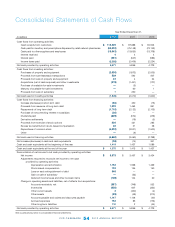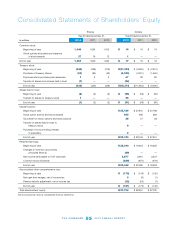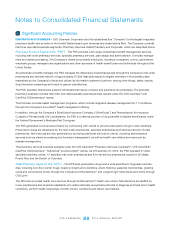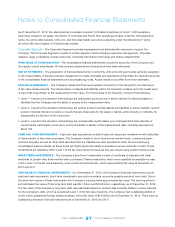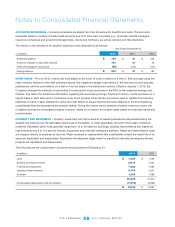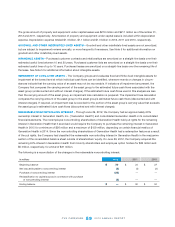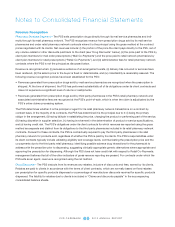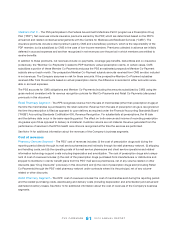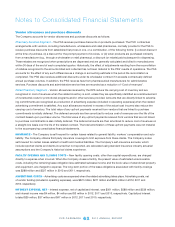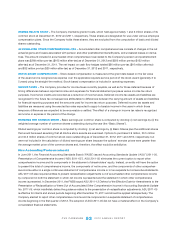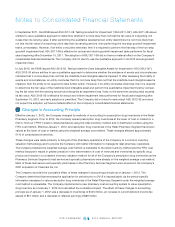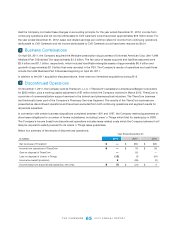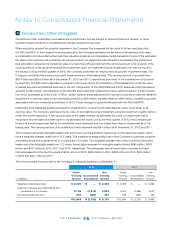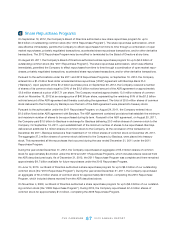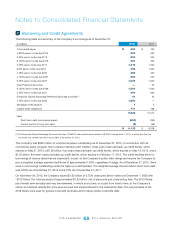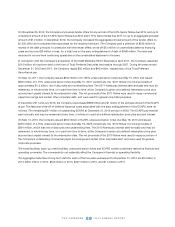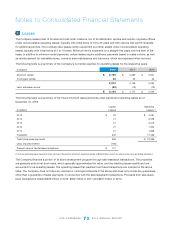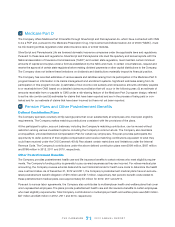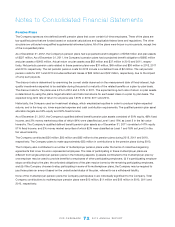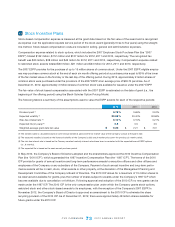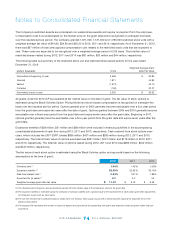CVS 2012 Annual Report Download - page 66
Download and view the complete annual report
Please find page 66 of the 2012 CVS annual report below. You can navigate through the pages in the report by either clicking on the pages listed below, or by using the keyword search tool below to find specific information within the annual report.
CVS CAREMARK 2012 ANNUAL REPORT
64
Notes to Consolidated Financial Statements
In September 2011, the FASB issued ASU 2011-08,
Testing Goodwill for Impairment
(“ASU 2011-08”). ASU 2011-08 allows
entities to use a qualitative approach to determine whether it is more likely than not that the fair value of a reporting unit
is less than its carrying value. If after performing the qualitative assessment an entity determines it is not more likely than
not that the fair value of a reporting unit is less than its carrying amount, then performing the two-step goodwill impairment
test is unnecessary. However, if an entity concludes otherwise, then it is required to perform the first step of the two-step
goodwill impairment test. ASU 2011-08 is effective for annual and interim goodwill impairment tests performed for fiscal
years beginning after December 15, 2011. The adoption of ASU 2011-08 did not have a material effect on the Company’s
consolidated financial statements. The Company did not elect to use the qualitative approach in its 2012 annual goodwill
impairment test.
In July 2012, the FASB issued ASU 2012-02,
Testing Indefinite-Lived Intangible Assets for Impairment
(“ASU 2012-02”).
ASU 2012-02 allows entities to use a qualitative approach to determine whether the existence of events and circumstances
indicates that it is more likely than not that the indefinite-lived intangible asset is impaired. If, after assessing the totality of
events and circumstances, an entity concludes that it is not more likely than not that the indefinite-lived intangible asset is
impaired, then the entity is not required to take further action. However, if an entity concludes otherwise, then it is required
to determine the fair value of the indefinite-lived intangible asset and perform the quantitative impairment test by compar-
ing the fair value with the carrying amount and recognize an impairment loss, if any, to the extent the carrying value exceeds
its fair value. ASU 2012-02 is effective for annual and interim impairment tests performed for fiscal years beginning after
September 15, 2012, and early adoption is permitted. The Company did not elect to early adopt ASU 2012-02 and does
not expect the adoption will have a material effect on the Company’s consolidated financial statements.
2 Changes in Accounting Principle
Effective January 1, 2012, the Company changed its methods of accounting for prescription drug inventories in the Retail
Pharmacy Segment. Prior to 2012, the Company valued prescription drug inventories at the lower of cost or market on a
first-in, first-out (“FIFO”) basis in retail pharmacies using the retail inventory method and in distribution centers using the
FIFO cost method. Effective January 1, 2012, all prescription drug inventories in the Retail Pharmacy Segment have been
valued at the lower of cost or market using the weighted average cost method. These changes affected approximately
51%ofconsolidatedinventories.
These changes were made primarily to bring all of the pharmacy operations of the Company to a common inventory
valuation methodology and to provide the Company with better information to manage its retail pharmacy operations.
The Company believes the weighted average cost method is preferable to the retail inventory method and the FIFO cost
method because it results in greater precision in the determination of cost of revenues and inventories by specific drug
product and results in a consistent inventory valuation method for all of the Company’s prescription drug inventories as the
Pharmacy Services Segment’s mail service and specialty pharmacies were already on the weighted average cost method.
Most of these mail service and specialty pharmacies in the Pharmacy Services Segment were acquired in the Company’s
2007 acquisition of Caremark Rx, Inc.
The Company recorded the cumulative effect of these changes in accounting principle as of January 1, 2012. The
Company determined that retrospective application for periods prior to 2012 is impracticable, as the period-specific
information necessary to value prescription drug inventories in the Retail Pharmacy Segment under the weighted average
cost method is unavailable. The Company implemented a new pharmacy cost accounting system to value prescription
drug inventory as of January 1, 2012 and calculated the cumulative impact. The effect of these changes in accounting
principle as of January 1, 2012 was a decrease in inventories of $146 million, an increase in current deferred income tax
assets of $57 million and a decrease in retained earnings of $89 million.
2


